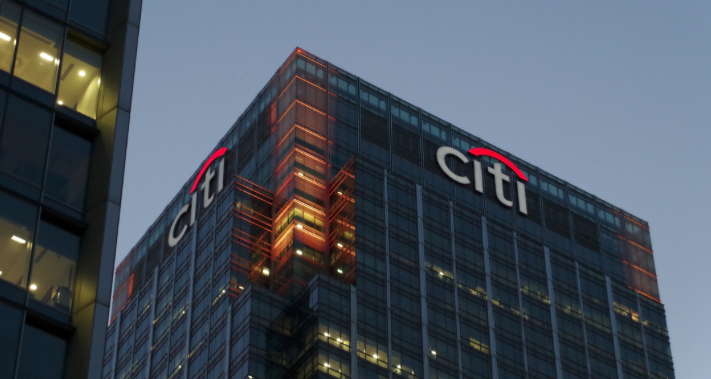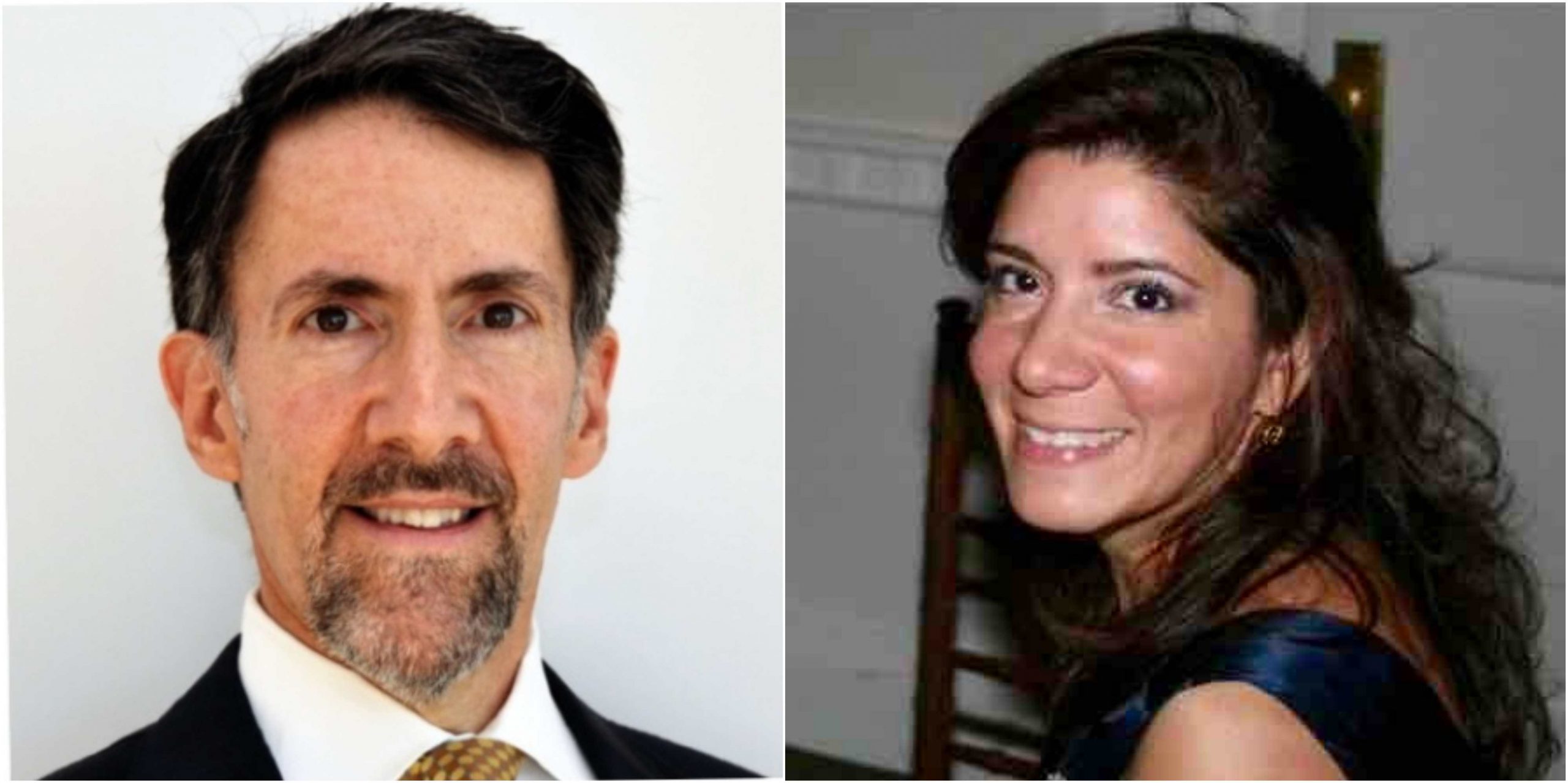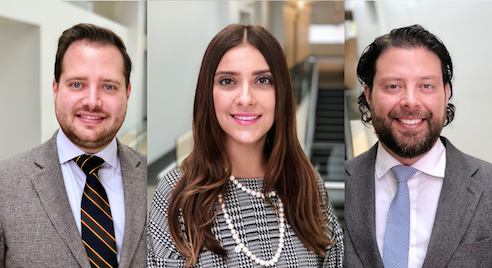Five months after the completion of the merger between Aberdeen Asset Management and Standard Life plc, an operation that has created a giant in the investment sector and which has probably been the largest in Europe in recent years, Aberdeen Standard Investments, with the help of Campbell Fleming, the firm’s Global Head of Distribution, and Menno de Vreeze, Head of Business Development of International Wealth Management, gathered about 70 industry professionals at the Mandarin Oriental Hotel in Miami to discuss investment opportunities in emerging markets.
The event was attended by Brett Diment, Head of Global Emerging Market Debt, and Nick Robison, Senior Investment Manager of Global Emerging Market Equities Investments. In addition, given investors’ growing interest in the renegotiations of the NAFTA agreement, Dr. Rogelio Ramírez De la O, President to Ecanal, and an expert on the subject, explained his vision.
Interview with Campbell Fleming
In an interview with Funds Society, Campbell Fleming, Global Head of Distribution, who has more than 20 years of experience in the LatAm market, shared the details of the merger and the management company’s new plans for the region.
With about 593 billion pounds, approximately 775 billion dollars in assets under management, the new firm is now the twenty-fifth largest asset management company worldwide, the first in the United Kingdom and the second in Europe. An operation that the market perceived as defensive, something with which Campbell Fleming agrees, as in an environment with an incessant consolidation in the industry, the two management companies thought it was a better strategy to become one of the biggest players in the market.
“With the merger, the firm has expanded all of its capabilities in the six main asset classes, including equities, fixed income, real estate, investment solutions, alternative assets, and private markets. In each of them we are acquiring a significant size. In the equity franchise we have reached 159 billion pounds, in fixed income we exceeded 160 billion, and in the investment solutions franchise close to 150. Prior to the merger, Aberdeen had always questioned whether it was too focused on the equity business. While Standard Life was more focused on the investment solutions business and absolute return strategies. There is a minimum overlap between the initial offers of each of the management companies, being a highly complementary offer when consolidated. In addition, only 4.5% of our worldwide clients overlap.Obviously, the opportunity is based on presenting Aberdeen products to Standard Life clients or Standard Life products to Aberdeen clients. A great opportunity for us, as we can now combine the capabilities of the two firms and become a solid global company,” says Campbell.
After the consolidation, the new firm has more than 1,000 investment professionals worldwide, investment managers in 24 different offices, offers client support in 50 locations and conducts business in 80 countries. A massive presence in order to be a management company that offers a complete service and more solutions and products to investment platforms.
“The new firm has been established very quickly, soon the sales teams and the client structure were formed, and gradually the announcements of who will lead the investment teams are being made.”
According to Campbell, the US business represents 11% of the assets under management, about 82 billion dollars and about 100 professionals dedicated to the distribution of funds.
“We manage around 100 billion dollars in the United States, and we will be able to develop more business in the country with greater authority than we have in the past. We are interested in the growth of US business, both on the domestic and international sides; with the combined resources of both firms we now have enough people to do business in the US more thoroughly than we have ever done before.The LatAm and US Offshore businesses in particular, are a strategic priority for us in the medium-long term. In the United States we have offices in Philadelphia, Boston, Stamford and New York and soon we will have someone permanently based in Miami for the US Offshore team. We manage over 4 billion in this business directly, with the help of Menno de Vreeze who is responsible for the US Offshore business and Linda Cartusciello, who is in charge of the institutional side of the business in Latin America. And, indirectly, we probably manage a larger amount via other booking centres. “
Under Menno’s leadership, the private banking business and the US Offshore distribution channels have grown very fast. “We are delighted to see growth in Latin America and how investors in the region are diversifying with investments abroad. We have received a great deal of interest from frontier-market debt funds or Indian fixed-income funds, as well as equity funds, which are of great interest to all those clients who wish to diversify.”
With the regulatory changes in transparency, business has decreased in Switzerland and elsewhere in terms of client identification and bank secrecy, increasing outflows, something that Campbell perceives as an opportunity for growth in the US offshore business.
Meanwhile, in Latin America they have increased their visits particurlarly to Uruguay and Santiago to channel more business development. They also have an office in Brazil, so they are covering practically the most important points in the region. “There is not a single model for the region. Some countries are more advanced institutionally, while others are beginning to build good wholesale and private banking relationships.”
With regards to the goals that have been set for the region, Campbell says that they want to double the assets in terms of their current market share. “At this moment, between the two firms we could reach that volume and we should get it. If we could globally double the assets within the next three to five years we would be looking very healthy.”
Lastly, in the Allfunds fund platform, Aberdeen Standard Investments has experienced continuous growth, managing close to 5 billion dollars from its relations with global banks and the business of institutions and consultants. “A lot of these assets are concentrated in Europe, particularly in Spain, but the platform is starting to build in Latin America and Asia,” concludes Campbell.
The event’s agenda
The event was attended by Brett Diment, Head of Global Emerging Market Debt, who described how the macroeconomic stability of emerging markets has improved significantly in terms of nominal gross domestic product growth, the deleveraging of the private sector, the recovery in the current account balance and the moderation of inflation. He also explained how the opportunities in traditional emerging debt are in Argentina, where economic recovery supports fiscal reform, in Brazil, where economic growth is about to return after a severe crisis, in India, where India’s Reserve Bank is expected to keep interest rates at lower levels, and in Russia, where disinflation paves the way for further cuts in rates. While in frontier markets, opportunities are centered in Egypt, where government reforms have significantly reduced the primary deficit, in Ghana, where interest rates have fallen due to lower inflation, in Sri Lanka, where the increase in tourism supports the commercial account, and in Ecuador, which offers attractive valuation levels compared to other competitors in emerging markets. However, according to Diment, the greatest investment opportunities come from the Asian giant: China is narrowing its research and development spending gap with respect to the most innovative economies, Japan, Germany, the United States, and the United Kingdom. China has changed its investment structure towards a more technologically intensive one, aggressively closing the IT investment gap it has with the United States. In addition, the local Chinese debt market, the third largest debt market worldwide, is open to international investors.
Next, Nick Robison, Senior Investment Manager of Global Emerging Market Equities, recommended some caution in the short term, although the asset class continues to offer attractive valuations and seems to be enjoying a recovery in economic terms and profits. The two main reasons for raising caution in this type of assets are the normalization process of the Fed’s policy and that of the rest of the central banks, which is expected to be gradual, but may still mean a risk for the region; and the fall of growth momentum in China.
Closing the presentations, Dr. Rogelio Ramírez De la O, President of Ecanal, explained the economic repercussions for Mexico of the renegotiation of the NAFTA treaty. After 24 years of the treaty, Mexico has not been able to develop a long-term development policy to achieve a significant advantage with the signing of the treaty. In these years, the wage spread between the US and Mexico has not diminished because Mexico has not managed to increase the domestic added value in its exports to the United States. While manufacturing exports have multiplied sevenfold in the period from 1993 to 2017, the value added in production has increased only 1.8 times, there being a disconnection between the NAFTA treaty and GDP growth.
Since the NAFTA treaty is a pillar of macroeconomic stability and an indirect guarantee for investment, it is very likely that Mexico will have to make substantial concessions to the demands of the United States, as Mexico has a greater dependence on the treaty and very little margin of leverage. If Mexico makes these concessions, the peso will most likely stabilize and continue to grow after the negotiations. The main obstacle is the pace of negotiations, since there are presidential elections in Mexico in July and elections in the US Congress in November 2018.








